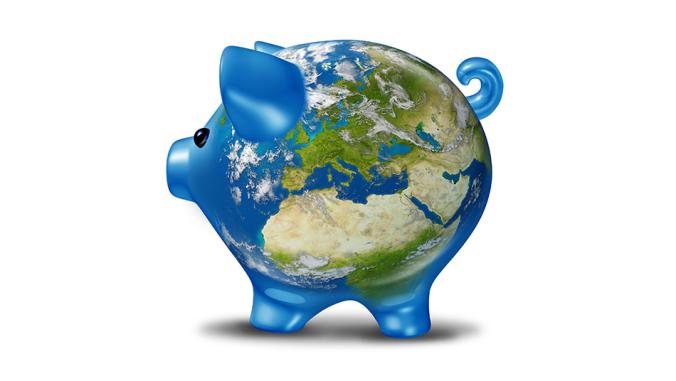How to solve the imbalance in ESG investing
Demand for sustainable investments outstrips supply, says S&P Global VP Dmitri Sedov.

Investors are actively demanding more information about different components of environmental, social and governance investments.
As evidence of this, S&P Dow Jones Indices, one of the world’s largest index providers and a division of S&P Global, acquired Trucost Plc, a carbon and environmental data provider, in October.
During a GreenBiz 17 program Wednesday, Dmitri Sedov, vice president of innovation and digital strategy at S&P Global, said the acquisition of Trucost will help solve a gap between the demand for sustainable investing and the supply of these investments.
"There is a verified interest on behalf of asset owners to put their money in something greener," said Sedov. "How do we meet that demand with supply of available investments?"
Sedov said one of the first steps to help solve this imbalance is to create a unified system that looks at environmental risks similar to the way S&P Global Ratings look at credit risk.
"It’s not even a thought how do you assess default risk. Well, you look at a credit rating," said Sedov. "We need a system similar to that in sustainability."
S&P has analyzed sustainability risks in the equity markets for a while with the S&P Dow Jones Sustainability Indices, which launched in 1999 as the first global sustainability benchmark.
The S&P Dow Jones Sustainability Indices selects companies based on long-term economic, environmental and social criteria as well as industry-specific sustainability trends.
Investment research companies and financial information providers are increasingly adding new ways to measure and gauge sustainability risks.
For example, in March, the investment research company Morningstar rolled out the first sustainability ranking for mutual funds, where companies are ranked on their environmental, social and governance (ESG) performance and compared to their industry peers.
Overall, more than $8.7 trillion (PDF) of investment capital is managed using environmental, social and governance (ESG) factors in the U.S. markets, according to the U.S. SIF Foundation.
Richard Mattison, CEO of Trucost, which provides sustainability data and insight to drive resilient, profitable business models and investment strategies, said that asset managers are actively looking to invest in green companies.
"The job here is to connect the sustainability community to the financial community within companies," said Mattison.
Dmitri Sedov, vice president of innovation and digital strategy at S&P Global, said the acquisition of Trucost will help solve a gap between the demand for sustainable investing and the supply of these investments.
The global bond market has been reported to total nearly $100 trillion, but, according to Sedov, right now there are only a few frameworks that look at the ESG components of bonds.
Green bonds are included in this market and are financial instruments that are issued to help finance renewable energy and energy efficiency projects. They have grown rapidly in the past few years.
A recent report by Moody’s Investors Service projects that green bond issuances will increase to over $200 billion in 2017 from $93.4 billion in 2016 if green bonds grow at their 2016 rate.
But S&P Global sees a broader opportunity in the entire bond market, and that there is a need to analyze bonds that are not technically green bonds but are still doing green initiatives.
S&P Global Ratings launched an initiative to evaluate proceeds of bonds and other types of financing on the basis of their environmental impact and climate resilience.
These bonds do not necessarily have to be labeled as green. Sedov offered example of corporate initiatives in energy efficiency and water preservation, which may not qualify the bond as a stand-alone green bond, but is still something investors would want to know on a relative and incremental basis.
"The question is not ‘is your bond green’ but ‘how green is your bond'," said Sedov.





